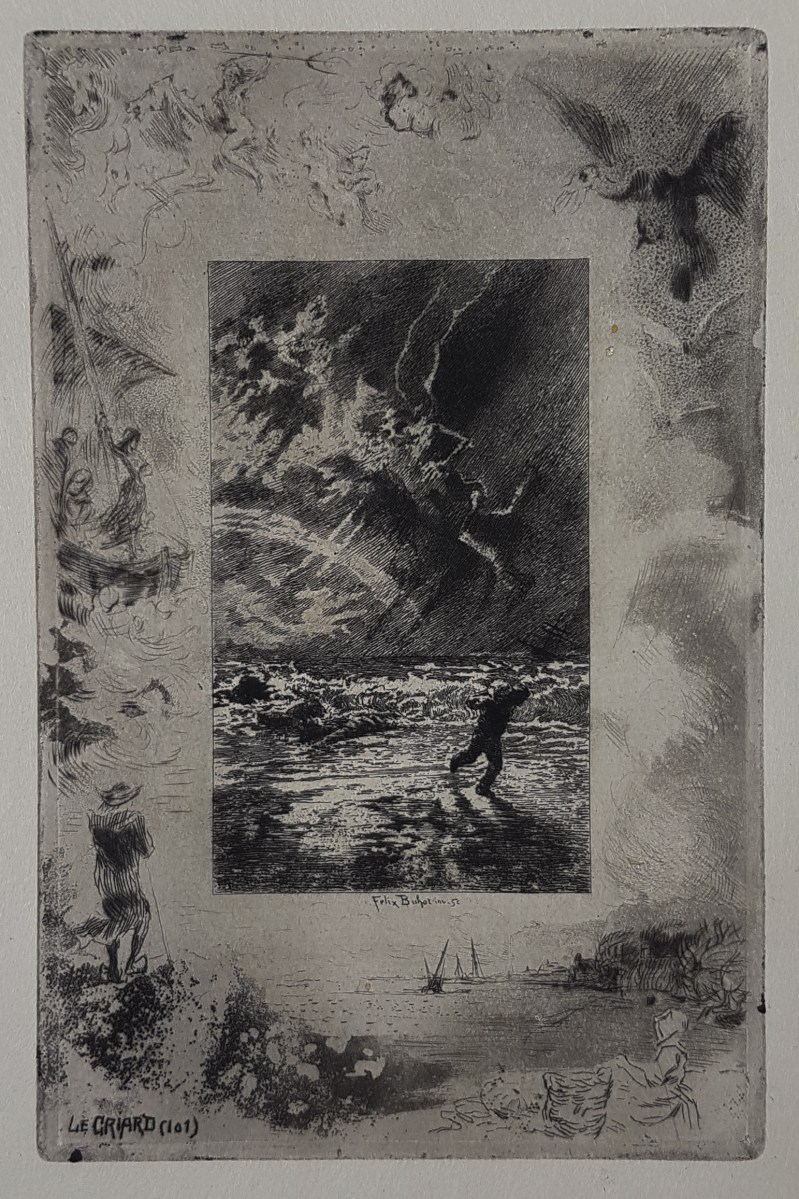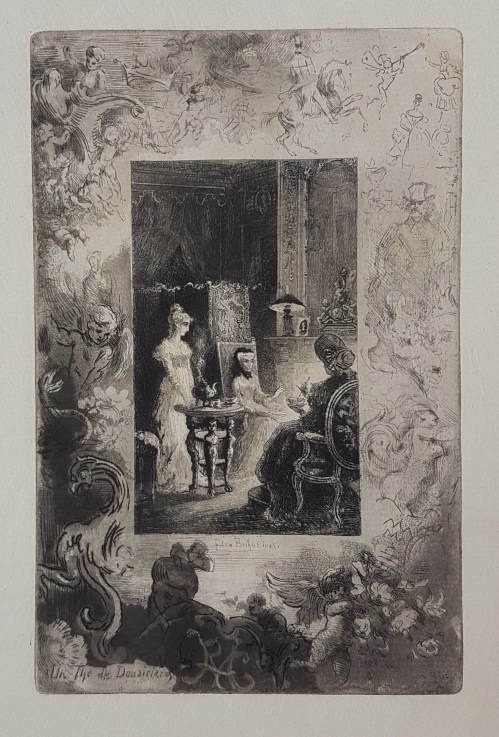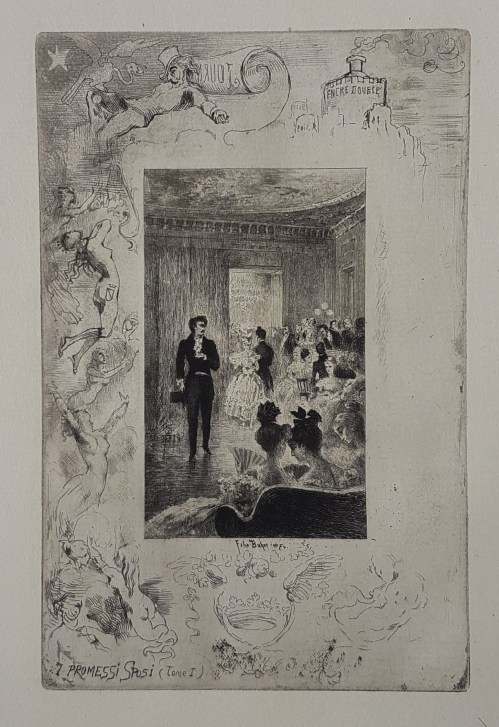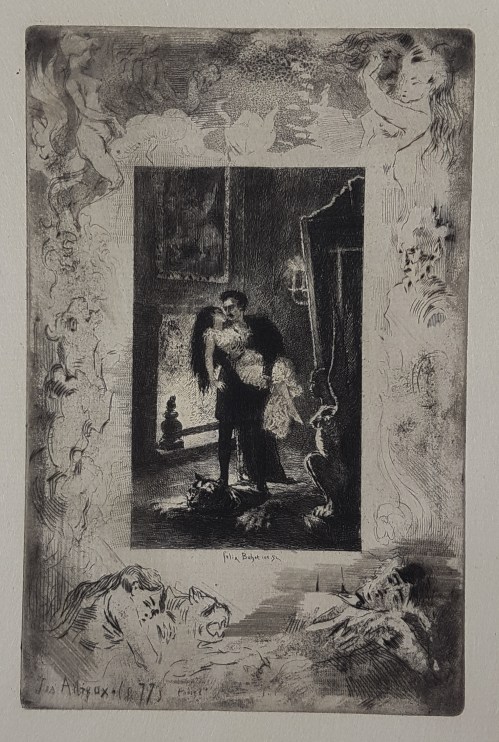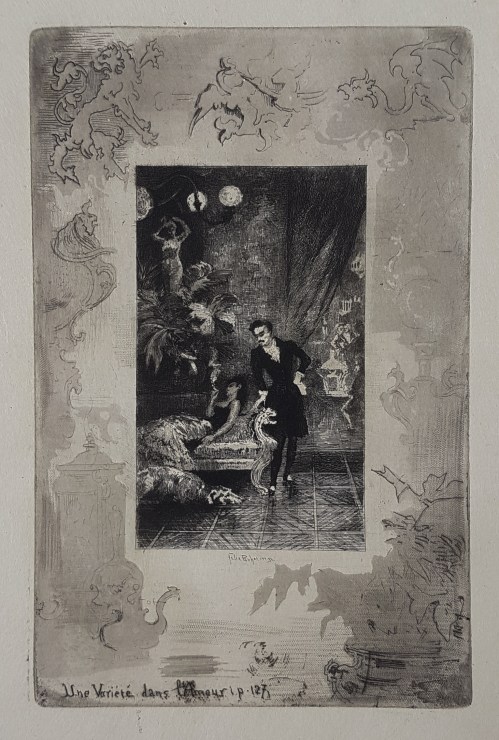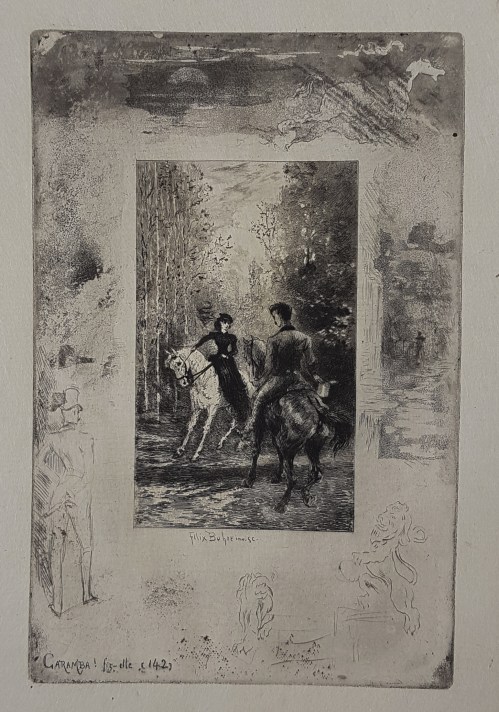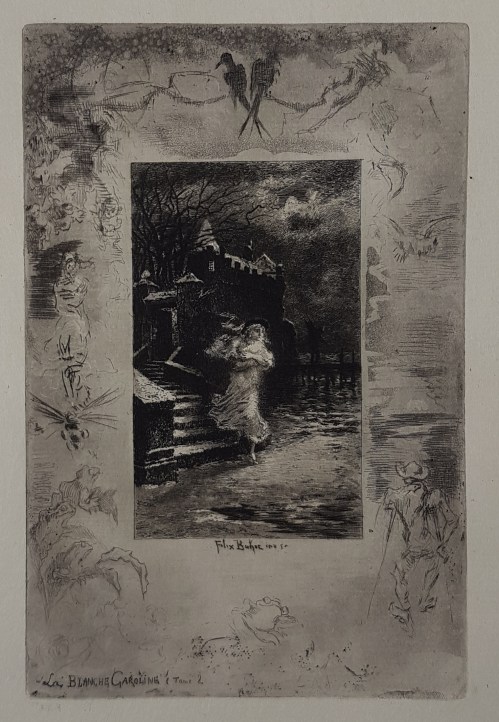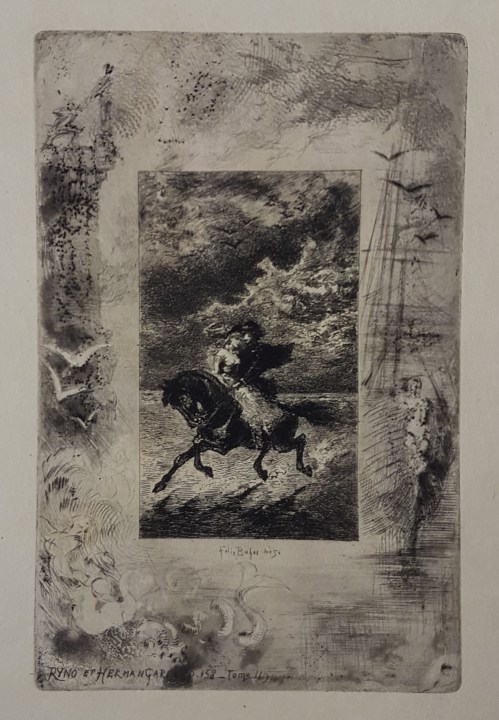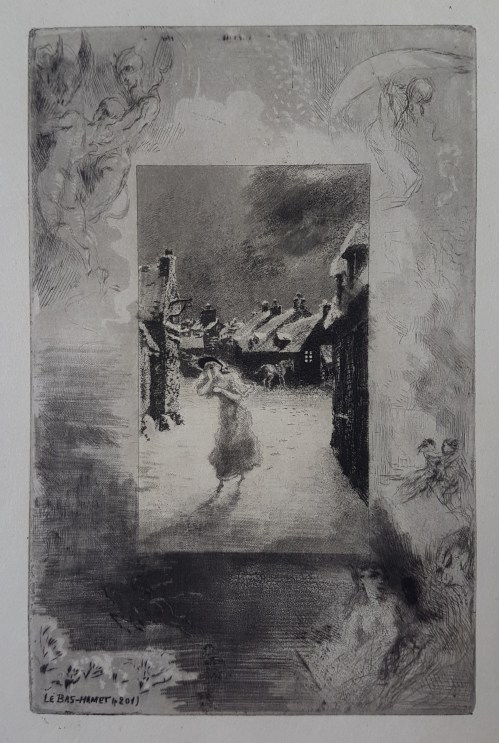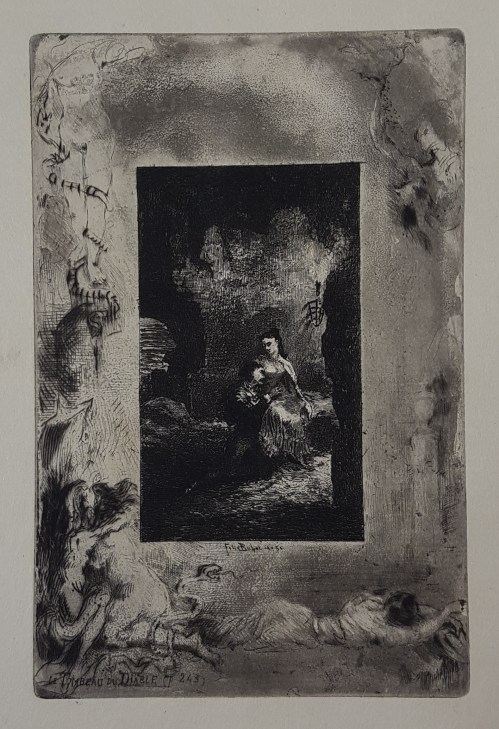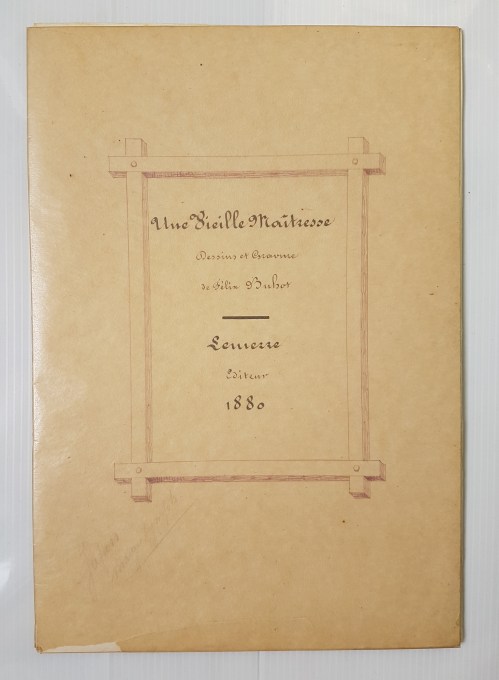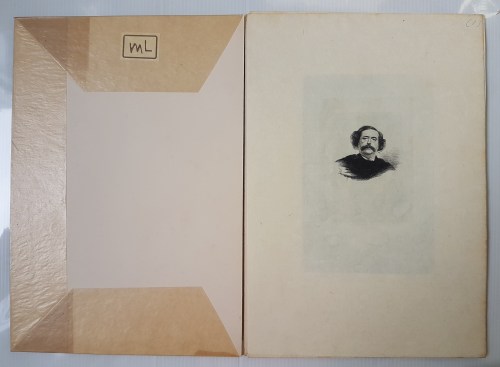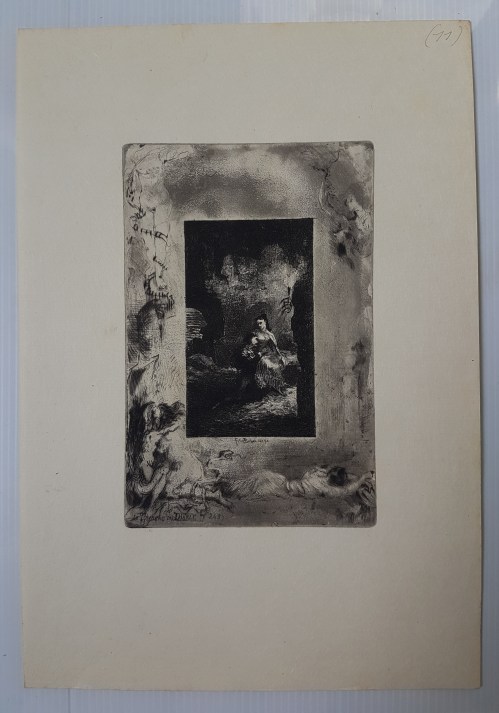Félix BUHOT: Illustrations for Une vieille maîtresse by Barbey d’Aurevilly, 1874
SOLD
Etching and drypoint, each about 175 x 115 mm. Bourcard & Goodfriend 99 to 108 (B. & G. 99, 5th state (of 7); B. & G. 100 and 101, 3rd state (of 5); B. & G. 102, 103 and 105 to 108, 4th state (of 6); B. & G. 104, 3rd state (of 6)).
Rare complete series of 10 plates, before erasing of the symphonics margins and before the plates were reduced. Edition of 38 copies.
This series contains:
- Un Thé de douairières [The dowagers' tea]
- I promessi sposi [I promessi sposi]
- Les Adieux [Farewell]
- Une Variété dans l’amour [Variety in Love]
- Caramba, fit-elle ! [Caramba, she said!]
- Le Criard [The Screecher]
- La Blanche Caroline [Caroline the White Lady ]
- Ryno et Hermangarde [Ryno and Hermangarde]
- Le Bas-Hamet [The village of Bas-Hamet]
- Le Tombeau du diable [The Devil's Tomb]
Superb impressions printed on japan laid paper. Generally in very good condition. Full margins (sheets: each around 300 x 210 mm). In a folder with annotations (title, writer, illustrator, edition, date 1880) written in pencil
Together with a Portrait of Barbey d’Aurevilly etched by Rajon, printed on the same paper.
Buhot met Barbey d'Aurevilly in 1872, and the writer introduced the artist to publisher Alphonse Lemerre. Barbey d'Aurevilly was a great admirer of Buhot's work; in the writer's words, Buhot “dreams with a head that is identical to mine”.
To Buhot, these prints were not just illustrations, but worked as an extension to the text. Regarding the publication of Manet's illustrations for the book Le Fleuve [The River] by Charles Cros in 1874, Buhot would say: “these sketches will gush out naturally from the text, as if from the pen of the writer, but modified by another creative genius.”
On this topic, J.-L. Dufresne mentions that Buhot used to write literary stories in his youth, and he would illustrate these stories with sketches. According to Dufresne, this habit resulted in the creation of symphonic margins: “Félix Buhot had well-developed literary tastes and the taste for writing prompted him to compose literary whimsies as he was still a teenager. He would illustrate these with sketches. In these illustrated literary attempts we can see the origin of the symphonic margin […]. » (Jean-Luc Dufresne, Valérie Sueur-Hermel, Alison McQueen, Félix Buhot, peintre graveur entre Romantisme et Impressionnisme, p. 112).



